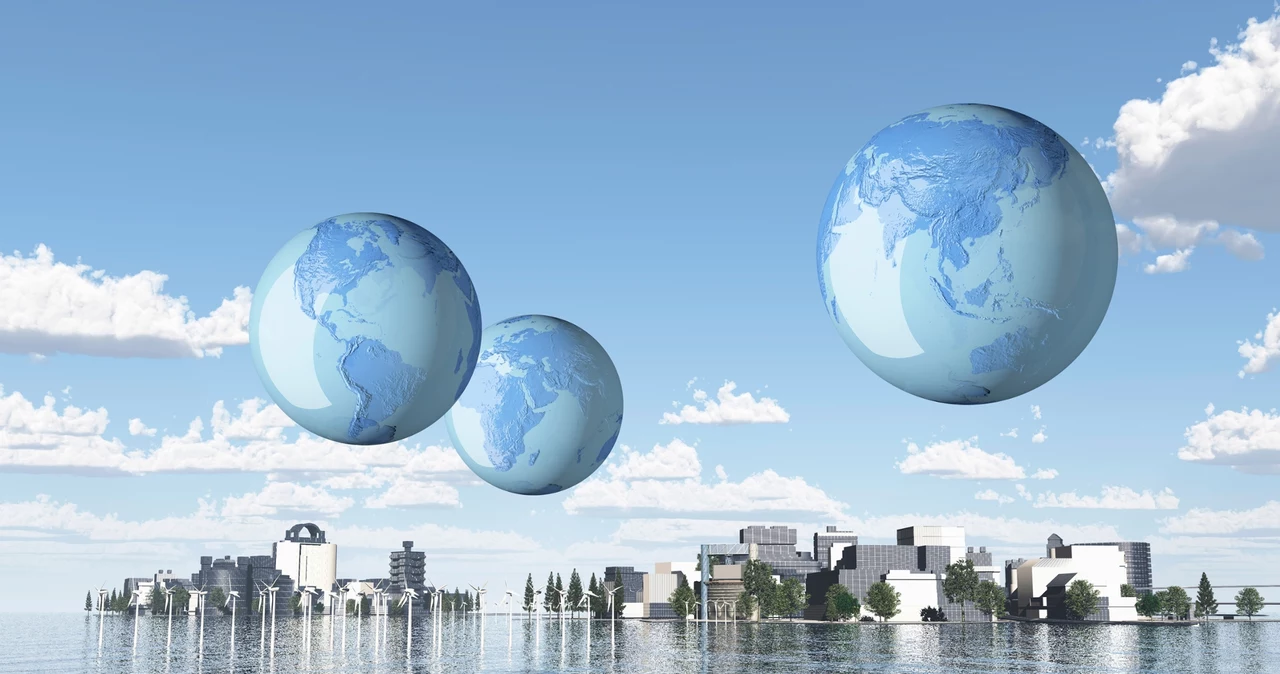Proponents of the rapid development of artificial intelligence claim that solutions based on it will help us quickly control the most dangerous processes that are destroying the climate and environment of our planet. In a recently published report, the World Economic Forum claims that the use of artificial intelligence can contribute to the fight against climate change. “This technology is already being used to send warnings of natural disasters in Japan, and to monitor deforestation in… Amazon2. Designing greener and smarter cities in ChinaThe report states.
In turn, the report Google The Boston Consulting Group suggests that AI could be used to reduce global greenhouse gas emissions by 5% to 10%, for example by improving transportation or industrial processes. The United Nations believes that AI can help achieve all strategic development goals, which aim to promote sustainable development while minimizing environmental damage caused by human activities.
All of these benefits may be achievable, but the short-term consequences of rapid advances in AI are much less promising.
Artificial intelligence is being used, among other things, to map forest areas.Pixel123RF/pixel
In a report published Tuesday, Google acknowledged that the new computing infrastructure built for the company’s AI tools is leading to a sharp increase in energy demand, and thus, Greenhouse gas emissions associated with the company’s operations.
Data centers, a key component of AI infrastructure, have been responsible for a 48% increase in greenhouse gas emissions associated with the company’s operations since 2019. The company, which previously pledged to achieve net-zero emissions by 2030, warns that there is “a great deal of uncertainty” about whether that goal will be met.
Google isn’t the only company that has sacrificed climate goals in order to develop cutting-edge, profitable, and potentially groundbreaking technology faster. Microsoftwhich is the largest investor in OpenAI, the company that developed, among other things, Chat GPT He also acknowledges that the ambitious goal of achieving net-zero emissions by 2030, set several years ago, may be unachievable due to the need to develop artificial intelligence.
Why does artificial intelligence increase carbon dioxide emissions?
The problem is that AI tools like ChatGPT, Gemini, Midjourney, and others require a lot of processing power. To ensure that, tech companies are investing billions in giant data centers — buildings filled with tens of thousands of computers performing calculations. These servers require massive amounts of electricity — both to power the computers themselves and to cool them — which can emit significant amounts of carbon dioxide, depending on the energy source used to power them. Building data centers also involves emissions Production and transportation of equipment necessary for its operation.
According to the International Energy Agency, total electricity consumption in data centres could double by 2026, reaching a level equivalent to the total energy consumption of Japan. Research firm SemiAnalytic estimates that by 2030, data centres will consume 4.5% of the world’s electricity. Water use is also significant – one study estimates that AI could be responsible for using up to 6.6 billion cubic metres of water by 2027, nearly two-thirds of England’s annual consumption.
A report by the Climate Action Against Misinformation coalition of environmental groups includes a statement saying that “people will be outraged when they see how much energy AI will consume in the coming years, and how the region will be flooded with misinformation about climate change.”
Tech giants are trying to invest in renewable energy.
However, the environmental costs of AI can be reduced by using clean energy to power data centers. That is, either renewables or nuclear power. Amazon, which — in addition to being the world’s largest retailer — is one of the world’s largest cloud providers, is also the world’s largest buyer of renewable energy. However, there is a problem: AI’s energy consumption is growing at a rate that often makes it necessary to use old, dirty energy sources, such as coal-fired power plants, because there are simply too few clean sources.
By the end of this decade, global renewable energy resources are expected to triple to meet governments’ climate targets. But achieving that target is now in question. The International Energy Agency, the world’s energy regulator, has warned that while global renewable energy capacity is set to grow at its fastest rate ever in 2023, current plans will only be enough to double capacity by 2030.
Onshore renewable energy projects, such as wind and solar farms, are built relatively quickly – they can take as little as six months to develop. But the slow pace of permitting, coupled with the weaknesses of ageing power grids that may not be able to cope with connections to many dispersed sources, can slow the process down significantly. This has raised concerns about whether eRenewable energy can keep up. Developing artificial intelligence. According to the Wall Street Journal, the largest technology companies already use a third of the energy generated by U.S. nuclear power plants.
According to the Wall Street Journal, the largest technology companies already use a third of the energy generated by U.S. nuclear power plants.123RF/pixel
Will AI become less voracious?
However, rapid advances in artificial intelligence – both in terms of the algorithms themselves and the computers they are trained on – offer hope that the rapid increase in emissions can be halted. New models require (relatively) less computing power to train, which means they require less energy than their predecessors.
But for now, this doesn’t translate into a reduction in electricity consumption. Instead, the new AI models are more efficient, using roughly the same amount of energy as their predecessors. In economics, this phenomenon is called the “Jevons Paradox,” after the economist who observed that James Watt’s improvement of the steam engine, which allowed much less coal to be used in industrial production, led to a huge increase in demand for this fuel, because when the price of steam power fell rapidly, new uses were discovered that were not profitable when energy was expensive.
Certainly, rather than being a tool for mitigating the effects of climate change, It introduced a huge new element of uncertainty. For all climate models. Our success in stopping the planet from warming depends largely on how AI evolves in the future.
Hydrogen is the fuel of the future. It can also power airplanes.Polsat News

Echo Richards embodies a personality that is a delightful contradiction: a humble musicaholic who never brags about her expansive knowledge of both classic and contemporary tunes. Infuriatingly modest, one would never know from a mere conversation how deeply entrenched she is in the world of music. This passion seamlessly translates into her problem-solving skills, with Echo often drawing inspiration from melodies and rhythms. A voracious reader, she dives deep into literature, using stories to influence her own hardcore writing. Her spirited advocacy for alcohol isn’t about mere indulgence, but about celebrating life’s poignant moments.








